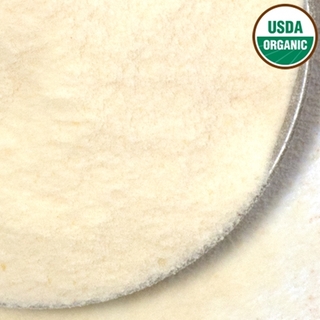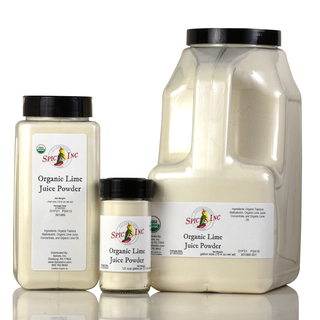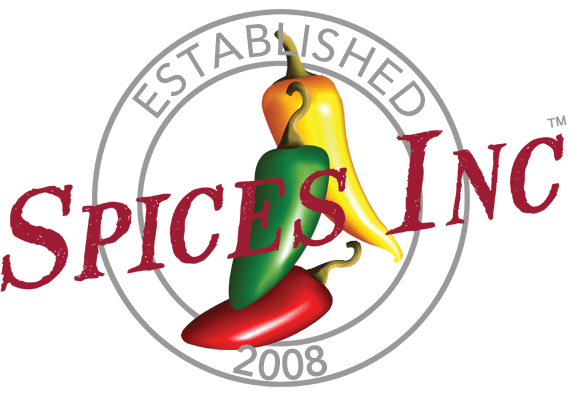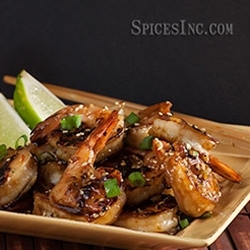Organic Lime Juice Powder




Organic Lime Juice Powder
Organic Lime Juice Powder, Citrus x latifolia, is a shelf-stable alternative to fresh lime juice. It is also known as lime powder, powdered lime, lime juice powder, or organic lime powder.
This is made by spraying organic lime juice concentrate onto organic maltodextrin which absorbs the flavor of the lime. When the liquid dries, the infused maltodextrin is left behind, which delivers a powerful taste of lime.
Organic Lime Juice Powder is popular with:
- manufacturers of sauces, pitas, salsas, and chips and tortillas;
- Asian/fusion restaurants;
- bar and grills;
- food trucks;
- seasoning companies;
- breweries;
- catering companies; and
- independent spice shops
One teaspoon of Organic Lime Juice Powder is equivalent to the flavor of the juice from half of a lime.
Flavor Profile
Organic Lime Juice Powder tastes bright and fresh like lime, with little bitter or sour edge.
How To Use
Organic Lime Juice Powder is perfect for adding a burst of flavor in sweets like cakes, cookies, scones, glazes, baking mixes, fillings, and icings. It also tastes wonderful in savory chicken, fish, or pork dishes, and adds a bright flavor to marinades, sauces, seasoning blends, and soups. Organic Lime Juice Powder is also great in salad dressings, meat marinades, or even just as a small pinch sprinkled over a salad. Lime tastes very good with almonds, so if you like making roasted almonds you could experiment with using this powder. Combine with a chile powder for a sweet heat kind of mixture. Add in drinks like smoothies or milkshakes for a vibrant boost.
| Also Called | Lime powder, powdered lime, lime juice powder, or organic lime powder |
| Species | Citrus x latifolia |
| Ingredients | Organic rice maltodextrin and organic lime juice concentrate |
| Flavor Profile | Bright and fresh like lime, without a bitter or sour edge |
| Recommended Uses | Baking mixes, glazes, icings, pastry fillings, powdered beverage bases, seasoning blends, sauces, soups, smoothies, milkshakes, chicken, fish, pork |
| Cuisine | American, Mexican, Thai, and Vietnamese |
| How To Store | Airtight container in a cool, dark place |
| Shelf Life | 6-12 months |
| Country of Origin | USA |
Nutrition Facts
Serving Size1 tsp
Amount Per Serving
Calories14
% Daily Value*
Total Fat0g0%
Saturated Fat0g0%
Trans Fat0g
Polyunsaturated Fat0g
Monounsaturated Fat0g
Cholesterol0mg0%
Sodium1.5mg0%
Total Carbohydrate3.5g1%
Dietary Fiber0.0g0%
Total Sugars0.5g
Added Sugars0g0%
Sugar Alcohol0.0g
Protein0.0g0%
Vitamin D0mcg0%
Calcium2mg0%
Iron0mg0%
Potassium8mg0%
*The % Daily Value (DV) tells you how much a nutrient in a serving of food contributes to a daily diet. 2,000 calories a day is used for general nutrition advice. These values were calculated and therefore are approximate. For more accuracy, testing is advised.


